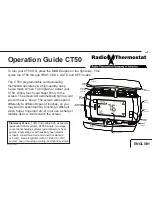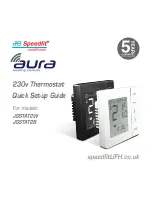
56
1.0 µm
1.6 µm
5.1 µm
8-14 µm
Tungsten
0.1-0.6
0.05-0.5
0.03
Polished
0.35-0.4
0.1-0.3
0.05-0.25
0.03-0.1
Zinc
Oxidized
0.6
0.15
0.1
0.1
Polished
0.5
0.05
0.03
0.02
A1.3
Non-metals - Typical Emissivity Values
1.0 µm
1.6 µm
5.1 µm
8-14 µm
Asbestos
0.9
0.9
0.95
0.95
Asphalt
—
0.95
0.95
0.95
Basalt
—
0.7
0.7
0.7
Carborundum
—
0.9
0.9
0.9
Ceramic
0.4
0.8-0.95
0.95
0.95
Clay
—
0.8-0.95
0.95
0.95
Concrete
0.65
0.9
0.95
0.95
Cloth
—
0.95
0 95
0.95
Glass
Plate
—
0.98
0.85
0.85
“Gob”
—
0.9
—
—
Gravel
—
0.95
0.95
0.95
Gypsum
—
0.4-0.97
0.8-0.95
0.8-0.95
Ice
—
—
0.98
0.98
Limestone
—
0.4-0.98
0.98
0.98
Paint —
—
0.9-0.95
0.9-0.95
Paper (any color)
—
0.95
0.95
0.95
Plastic (opaque,
—
0.95
0.95
0.95
over 20 mils)
Rubber
—
0.9
0.9
0 95
Sand
—
0.9
0.9
0.9
Snow
—
0.9
0.9
0.9
Soil
—
—
0.9-0.98
0.9-0.98
Water
—
—
0.93
0.93
Wood, Natural
—
0.9-0.95
0.9-0.95
0.9-0.95
To optimize surface temperature measurements consider the following guidelines:
1.
Determine the object emissivity using the suitable instrument for measurement.
2.
Avoid reflections by shielding the object from surrounding high temperature sources.
3.
For higher temperature objects use shorter wavelength instruments, whenever any overlap occurs.
4.
For semi-transparent materials such as plastic films and glasses, assure that the background is uniform and lower in
temperature than the object.
5.
Mount the sensor perpendicularly to the surface whenever the emissivity is less than 0.9. In any case, do not exceed
angles more than 30 degrees from incidence.





































